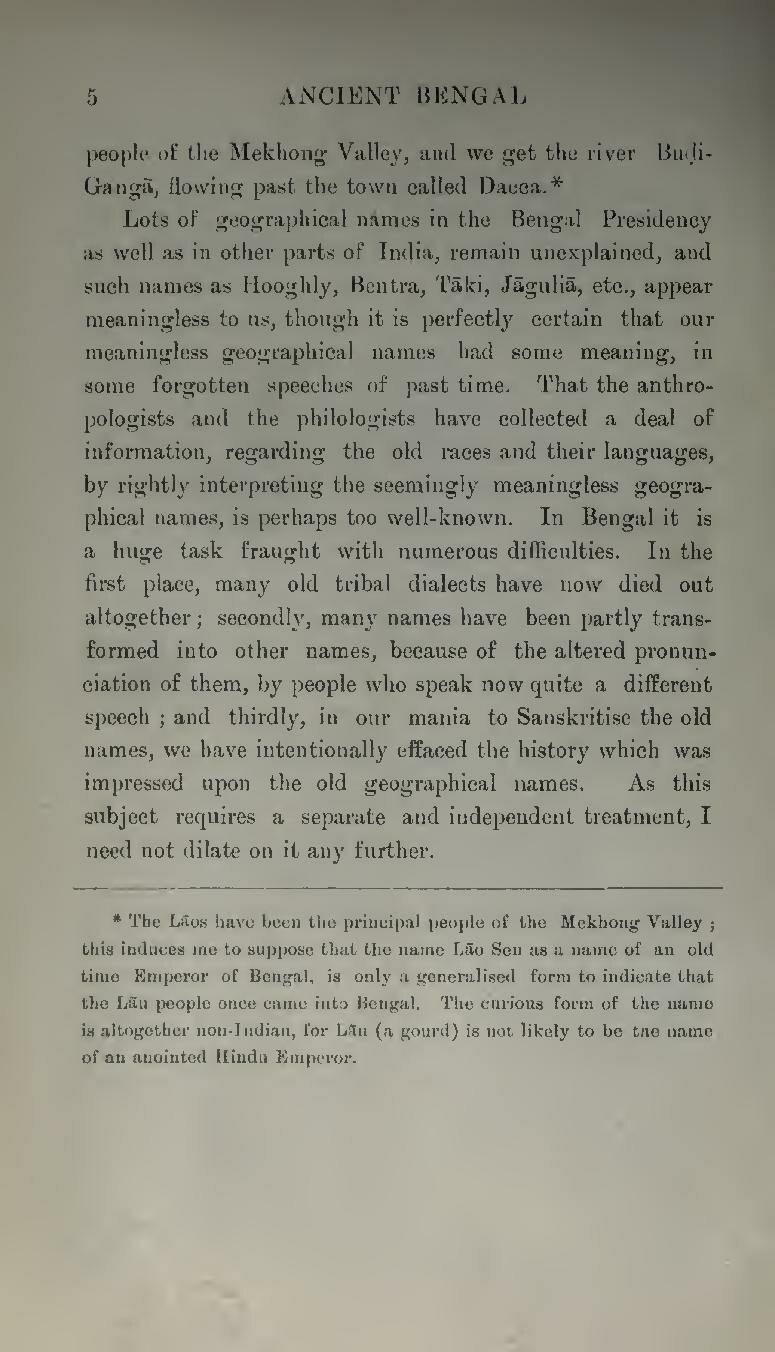people of the Mekhong Valley, and we get the river Buḍi-Gangā, flowing past the town called Dacca.[1]
Lots of geographical names in the Bengal Presidency as well as in other parts of India, remain unexplained, and such names as Hooghly, Bentra, Tāki, Jāguliā, etc., appear meaningless to us, though it is perfectly certain that our meaningless geographical names had some meaning, in some forgotten speeches of past time. That the anthropologists and the philologists have collected a deal of information, regarding the old races and their languages, by rightly interpreting the seemingly meaningless geographical names, is perhaps too well-known. In Bengal it is a huge task fraught with numerous difficulties. In the first place, many old tribal dialects have now died out altogether; secondly, many names have been partly transformed into other names, because of the altered pronunciation of them, by people who speak now quite a different speech; and thirdly, in our mania to Sanskritise the old names, we have intentionally effaced the history which was impressed upon the old geographical names. As this subject requires a separate and independent treatment, I need not dilate on it any further.
- ↑ The Lāos have been the principal people of the Mekhong Valley; this induces me to suppose that the name Lāo Sen as a name of an old time Emperor of Bengal, is only a generalised form to indicate that the Lāu people once came into Bengal. The curious form of the name is altogether non-Indian, for Lāu (a gourd) is not likely to be the name of an anointed Hindu Emperor.
